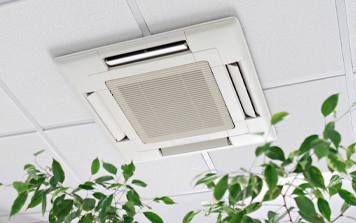Strategies for Managing Seasonal Allergies Through Improved Indoor Air Quality
 Seasonal allergies can be a major challenge, especially during peak pollen seasons. While outdoor pollen is a primary trigger, indoor allergens such as dust mites, mold, and pet dander can exacerbate symptoms. To alleviate these indoor allergy triggers and create a more comfortable living environment, consider the following strategies:
Seasonal allergies can be a major challenge, especially during peak pollen seasons. While outdoor pollen is a primary trigger, indoor allergens such as dust mites, mold, and pet dander can exacerbate symptoms. To alleviate these indoor allergy triggers and create a more comfortable living environment, consider the following strategies:
1. HEPA Filters: High-efficiency particulate air (HEPA) filters are highly effective in capturing small particles like pollen, dust mites, and other allergens. Installing HEPA filters in both your HVAC system and standalone air purifiers can significantly reduce indoor allergen levels. Make sure to regularly replace these filters according to the manufacturer’s recommendations to maintain their effectiveness and ensure optimal air quality.
2. Keep Windows Closed: During periods of high pollen counts, keeping your windows closed is crucial to preventing pollen from entering your home. This simple step can greatly reduce the amount of pollen that infiltrates your indoor space. Instead, use air conditioning to maintain indoor comfort and help filter the air. Air conditioners equipped with appropriate filters can further reduce allergen levels indoors.
3. Use Air Purifiers: Air purifiers with HEPA filters can provide additional relief by removing airborne allergens from your home. Place these purifiers in key areas, such as bedrooms and living rooms, where you spend the most time. Ensure that the air purifiers are well-maintained by regularly cleaning them and replacing filters as needed to ensure they continue to perform effectively.
4. Control Humidity: Maintaining indoor humidity levels between 30-50% is essential for reducing allergens such as mold and dust mites. Use a dehumidifier to manage humidity levels and prevent excessive moisture, which can contribute to mold growth and increased dust mite populations. Regular maintenance and cleaning of the dehumidifier are also important to prevent mold and bacteria buildup.
5. Regular Cleaning: Frequent cleaning is essential for managing indoor allergens. Dust and vacuum regularly using a vacuum cleaner equipped with a HEPA filter to capture fine particles. Wash bedding, curtains, and pet bedding in hot water to remove allergens and dust mites. Additionally, regular grooming of pets can help minimize pet dander, which is a common allergen.
6. Address Mold and Moisture: Mold can thrive in damp areas and significantly impact indoor air quality. Regularly check for signs of mold and address any moisture issues promptly. Use mold-resistant cleaning products and ensure proper ventilation in areas prone to dampness, such as bathrooms and basements, to prevent mold growth and maintain a healthy indoor environment.
7. Reduce Clutter: Clutter can trap dust and allergens, making it harder to keep your home clean. Minimize clutter by using storage solutions to keep surfaces clear and regularly declutter your living spaces. This practice helps reduce dust accumulation and makes cleaning more manageable.
8. Allergy-Friendly Plants: Certain houseplants, such as snake plants and spider plants, can help improve indoor air quality by absorbing pollutants and releasing oxygen. Choose low-maintenance, allergy-friendly plants and ensure proper care to avoid mold growth. Proper plant care can enhance air quality without introducing additional allergens.
9. Allergy-Proof Bedding: Protecting your sleep environment from allergens can improve your overall comfort. Use an allergen-proof mattress and pillow covers to reduce exposure to dust mites. Wash your bedding regularly in hot water to eliminate dust mites and other potential allergens.
By incorporating these strategies into your home care routine, you can significantly improve indoor air quality and better manage seasonal allergies, creating a more comfortable living environment. For professional assistance with air quality solutions, consider contacting the HVAC experts at Aire One Scarborough.


